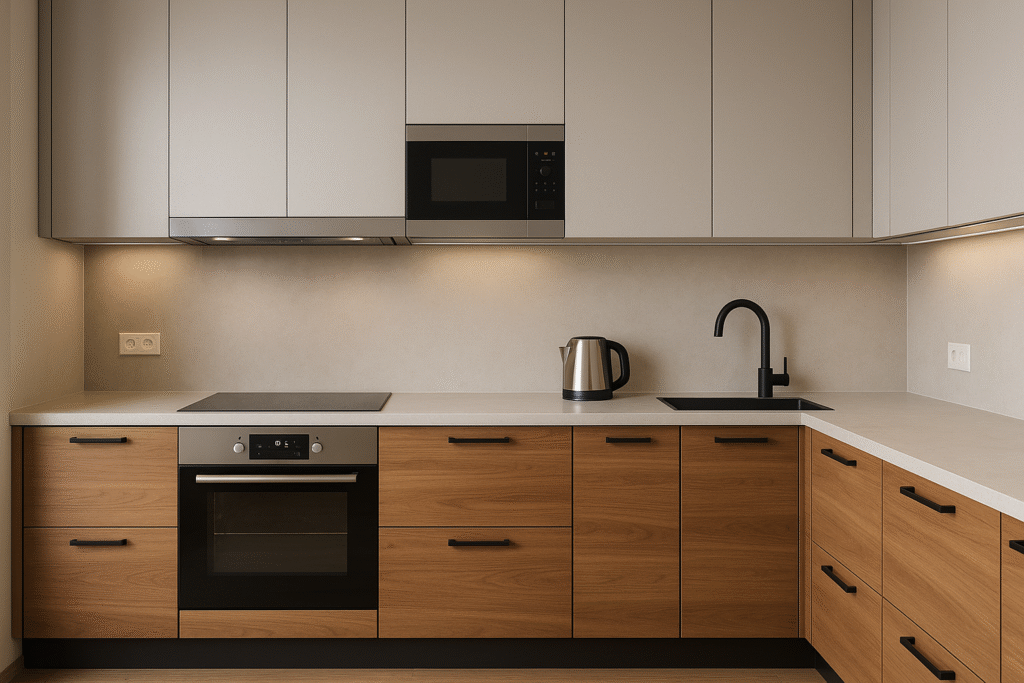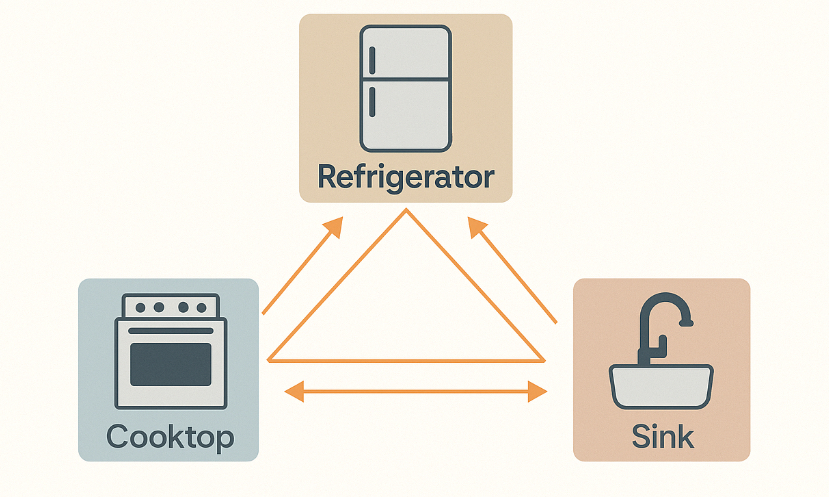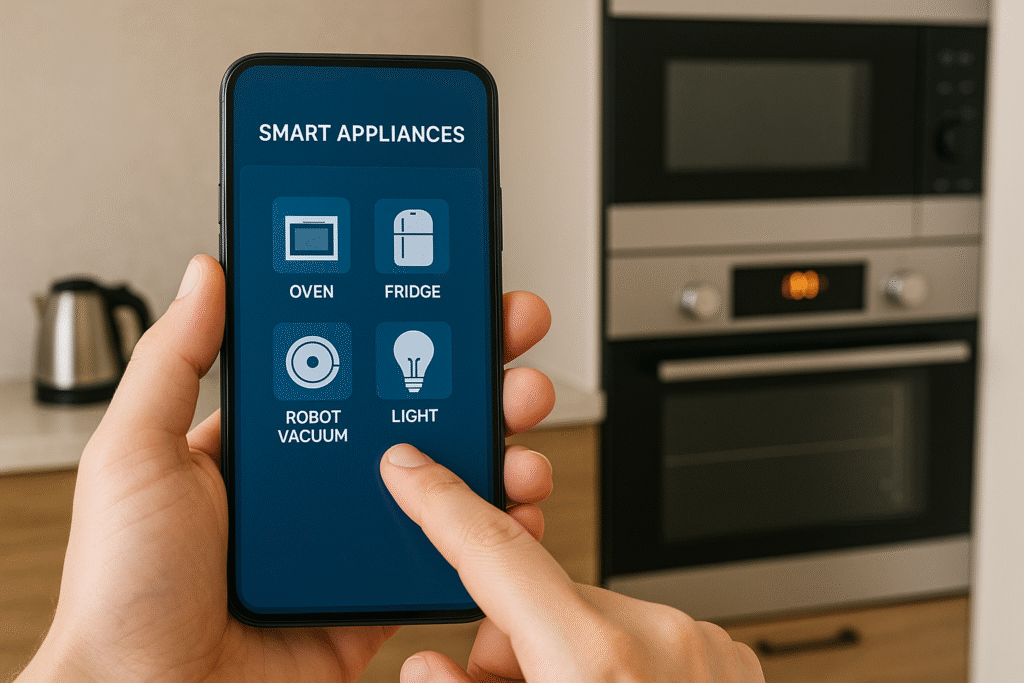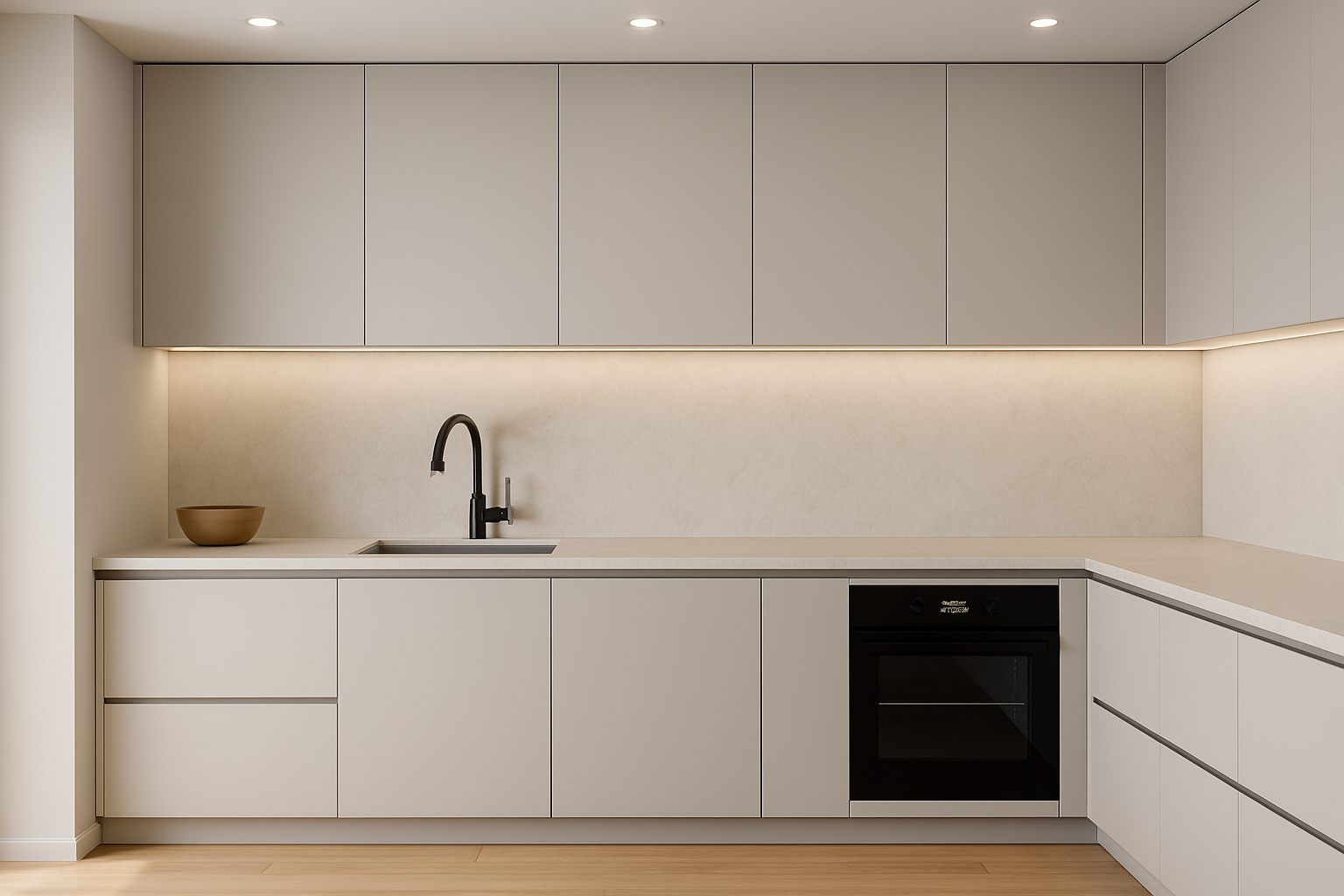Table of Contents
Introduction: Integrate Appliances for Modular Kitchens with Smart Planning
Integrate appliances for modular kitchen design to create a sleek, efficient, and organized space. Built-in ovens, microwaves, refrigerators, dishwashers, and chimneys blend seamlessly into cabinetry, enhancing both style and functionality. This integration saves counter space, improves workflow, and boosts energy efficiency. Whether building new or renovating, integrating appliances ensures a modern kitchen that’s smart, practical, and a joy to cook in.
Why Appliance Integration Matters in a Modular Kitchen
A modular kitchen thrives on minimalism, convenience, and space optimization. Seamlessly integrated appliances:
- Eliminate visual clutter
- Enhance workflow and accessibility
- Boost energy efficiency
- Improve overall kitchen aesthetics
✅ Pro Tip: Pre-plan appliance positioning during the layout phase to avoid costly changes later.
Select the Right Appliances for Modular Kitchen Integration
Choosing the right appliances to integrate for the modular kitchen is the foundation of a successful and functional culinary space. From built-in ovens and microwaves to smart chimneys and concealed dishwashers, the selection and strategic placement of each appliance influence both the efficiency and aesthetics of your kitchen. Seamlessly integrated appliances not only enhance workflow and save space but also contribute to a sleek, modern look that defines modular kitchen design today.
Built-in vs Freestanding Appliances

- Built-in appliances (like ovens, microwaves, and dishwashers) blend into cabinetry for a seamless look.
- Freestanding appliances are more flexible but can interrupt design continuity.
Essential Appliances to Consider
- Built-in oven and microwave: Save counter space and maintain a tidy look
- Induction cooktop or hob: Smart, safe, and easy to clean
- Chimney or hood: Prevent smoke and grease from settling
- Refrigerator: Integrated or standalone depending on the kitchen layout
- Dishwasher: Preferably built-in with a front panel matching your cabinets
Plan Electrical and Plumbing Points
Strategic Planning for Wiring and Water Lines
- Ensure sufficient power points for all appliances
- Use dedicated circuits for high-power appliances like ovens or dishwashers
- Install water inlets/outlets for dishwashers and refrigerators with water dispensers
- Add switches at accessible heights for safe operation
⚠️ Ensure all fittings follow local electrical safety codes and plumbing standards.
Prioritize Energy Efficiency and Sustainability
Choose Energy Star Rated Appliances
- Save on monthly electricity bills
- Lower your carbon footprint
- Extend appliance lifespan
Look for the BEE Star Rating (India) or Energy Star (USA) label while buying.
To understand how to choose the right appliances, refer to the official BEE Star Label scheme. 👉 Learn more about India’s BEE Star Label Scheme.
When selecting appliances, it’s crucial to opt for energy-efficient models—refrigerators, dishwashers, and stoves with top ratings significantly cut monthly costs and environmental impact. 👉 Learn how to choose energy-efficient kitchen appliances (U.S. Department of Energy).
Maintain Aesthetic Consistency
Panel-Ready and Built-In Designs
- Use panel-ready designs to match appliance fronts with cabinet finishes
- Opt for matte black, stainless steel, or glass finishes to match modern modular themes
- Align appliance handles and control panels for visual uniformity
Consider Ergonomics and Workflow
Use the Kitchen Work Triangle Principle

Place the cooktop, refrigerator, and sink in a triangular layout to:
- Minimize movement
- Enhance cooking efficiency
- Ensure better appliance placement
Smart Kitchen Appliances for Modern Homes

Upgrade to IoT-enabled appliances that can be controlled via smartphone:
- Wi-Fi ovens
- Smart refrigerators with inventory alerts
- App-controlled dishwashers
These features enhance convenience and kitchen automation.
IoT-enabled appliances not only add convenience but also elevate safety and operational efficiency. From gas-leak sensors to centralized systems that can shut off ovens remotely, the benefits are substantial. 👉 Learn how IoT is enhancing kitchen safety and efficiency.
Safety and Ventilation Tips
- Install chimneys with adequate suction power based on kitchen size
- Include under-cabinet lighting and ventilation grills
- Use child-lock appliances if you have kids
Conclusion
To integrate appliances for modular kitchen design is not just about aesthetics—it’s about creating a kitchen that’s smart, energy-efficient, and customized to your lifestyle. From appliance selection to placement and sustainability, integration is the key to a high-functioning, visually appealing kitchen space.
FAQs (Frequently Asked Questions) about how to integrate appliances for modular kitchen
How do I plan electrical points for modular kitchen appliances?
Work with an electrician during the kitchen layout phase. Ensure each appliance has a dedicated socket and consider backup options for high-load appliances.
Are energy-efficient appliances worth the investment?
Yes. They reduce energy bills, last longer, and are environmentally friendly.
Can I add smart appliances to an existing modular kitchen?
Yes. Many smart appliances are plug-and-play and can be easily integrated without structural changes.
Is a built-in refrigerator better than a freestanding one?
A built-in fridge offers a seamless look but is more expensive and may have size limitations. Freestanding units are flexible and easier to replace.
Also Read:
